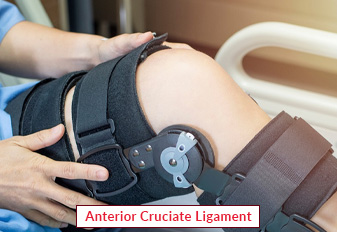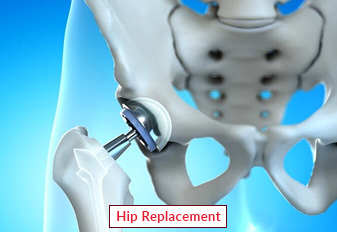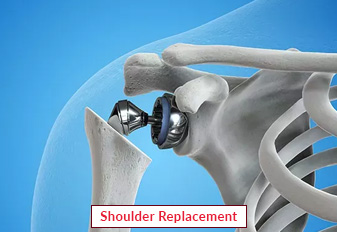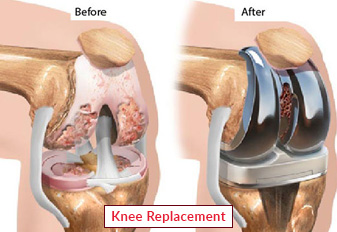Anterior Cruciate Ligament (ACL) Repair Surgery

An ACL injury is a tear or sprain of the anterior cruciate ligament (ACL) — one of the strong bands of tissue that help connect your thigh bone (femur) to your shinbone (tibia). ACL injuries most commonly occur during sports that involve sudden stops or changes in direction, jumping and landing — such as soccer, basketball, football and downhill skiing.
Ligaments are strong bands of tissue that connect one bone to another. The ACL, one of two ligaments that cross in the middle of the knee, connects your thighbone to your shinbone and helps stabilize your knee joint.
Book an Appointment
About Anterior Cruciate Ligament (ACL)
ACL injuries often happen during sports and fitness activities that can put stress on the knee:
- Suddenly slowing down and changing direction
- Pivoting with your foot firmly planted
- Landing awkwardly from a jump
- Stopping suddenly
- Receiving a direct blow to the knee or having a collision
Symptoms of an Anterior Cruciate Ligament (ACL) injury can vary in severity and presentation, but they often include the following:
- Pain: Patients with an ACL injury frequently experience pain at the time of the injury, which can range from mild to severe. The pain may be located in the knee joint and surrounding area.
- Swelling: Swelling, or edema, is a common symptom of an ACL injury. The knee joint often becomes noticeably swollen within a few hours after the injury occurs. The swelling is typically due to the accumulation of blood and other fluids in the joint.
- Instability: ACL injuries often lead to a sense of instability in the knee. Patients may feel as if the knee is giving way, particularly when trying to pivot, change direction, or bear weight on the injured leg. This instability can increase the risk of falling.
- Loss of Range of Motion: ACL injuries can result in a decreased range of motion in the knee. Patients may have difficulty fully extending or bending the knee, and they may experience stiffness.
- Audible Popping or Snapping Sound: Some individuals report hearing an audible popping or snapping sound at the time of the ACL injury. This may be accompanied by immediate pain and a feeling of instability.
- Bruising: Bruising, or ecchymosis, may develop around the knee due to the accumulation of blood within the joint. The bruising is typically noticeable within a day or two after the injury.
- Difficulty Walking: Walking can be challenging, particularly if the injury is severe. Patients may limp or have difficulty bearing weight on the affected leg.
Procedure of Anterior Cruciate Ligament (ACL)
Anterior Cruciate Ligament (ACL) reconstruction is a surgical procedure designed to repair a torn or damaged ACL, one of the key ligaments in the knee that provides stability and support. This procedure is typically performed arthroscopically, which is a minimally invasive approach that involves smaller incisions and specialized instruments. Here is a step-by-step overview of the ACL reconstruction procedure:
- Preoperative Evaluation:Prior to the surgery, the patient undergoes a comprehensive evaluation, which includes a detailed medical history, physical examination, and diagnostic imaging such as an MRI. This assessment helps the healthcare provider determine the extent of the ACL injury and the appropriate treatment plan.
- Anesthesia:ACL reconstruction is performed under anesthesia. The patient may receive general anesthesia, which results in unconsciousness, or regional anesthesia, which numbs the area surrounding the knee. The choice of anesthesia depends on the patient's preference and the surgeon's recommendation.
- Arthroscopic Approach:The surgeon makes small incisions in the knee to insert an arthroscope, a thin, flexible tube with a camera and light attached to it. The arthroscope provides a clear view of the interior of the knee joint, allowing the surgeon to assess the damage and perform the procedure.
- Graft Selection:The surgeon determines the source of the graft, which is the replacement tissue used to reconstruct the ACL. Graft options include autografts (using the patient's own tissue) or allografts (using donor tissue).
- Graft Harvesting:If an autograft is chosen, the surgeon may harvest a tendon, typically from the patient's hamstring (hamstring autograft) or patellar tendon (patellar tendon autograft). The harvested graft is then prepared for ACL reconstruction.
- Tunnel Creation:The surgeon creates bone tunnels in the tibia and femur to accommodate the graft. These tunnels serve as anchors for the new ACL.
- Graft Fixation:The graft is threaded through the bone tunnels and secured in place using screws, fixation devices, or sutures. This recreates the ACL's function and provides knee stability.
- Closure and Postoperative Care:After confirming the graft's placement and stability, the incisions are closed with sutures, and the surgical area is bandaged. Patients are then monitored in the recovery area and may be allowed to return home the same day.
Overall, ACL treatment procedures are typically performed arthroscopically, which is a minimally invasive technique that allows for a faster recovery and fewer complications compared to open surgery. However, recovery time can vary depending on the individual and the extent of the injury.
Require Assistance?
Get A Quick Callback From Our Healthcare Experts






